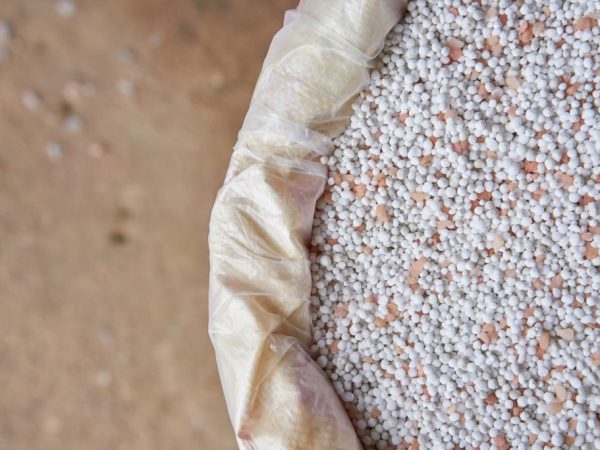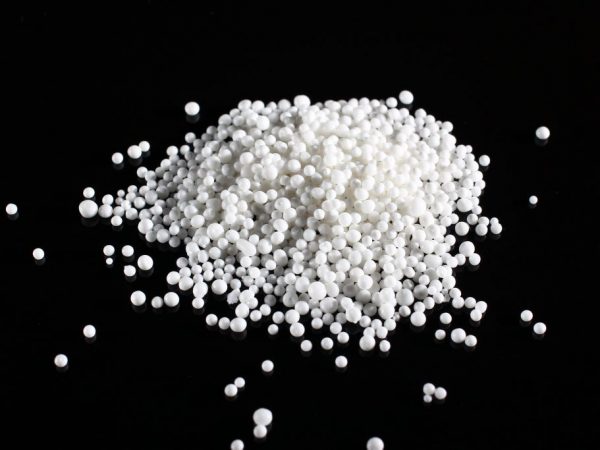The benefits of ammonia for tomatoes
To care for the plants on the site, they use not only organic substances, but also chemical compounds. They are used to feed plants, fertilize them and fight pests. One of the most popular substances is ammonia. Ammonia is especially useful for tomatoes.

The benefits of ammonia for tomatoes
What is this substance
Ammonia is a chemical that produces nitrogen in the recycling cycle. People call it ammonia or ammonia (ammonia). These substances are aqueous solutions of ammonia. In its pure form, it is a volatile, pungent-smelling substance. In large doses and in contact with mucous membranes, it is dangerous to humans.
Tatiana Orlova (Candidate of Agricultural Sciences):
Note! In the form of top dressing, a 10% ammonia solution is used. All doses are designed specifically for him. But in specialized stores on sale you can also find 25% ammonia. Be careful when applying it.
In gardening, it is used for several purposes at once:
- for fertilization;
- for feeding;
- as a pesticide from pests;
- to water the plants (in addition to water).
The plant receives nitrogen from it. This is what it feeds on. Although the nitrogen content in the air is 78%, it is absorbed only in combination with water. The chemical ammonia is a source of a component necessary for a plant.
Tatiana Orlova (Candidate of Agricultural Sciences):
The soil contains only 0.5 to 2% nitrogen. With a few exceptions, higher plants cannot get nitrogen from the air, which contains a lot of it. It is absorbed by special nitrogen-fixing bacteria that live in the soil. They make nitrogen available to plants.
Advantages and disadvantages
Like any fertilizer, this substance has advantages:
- you can not overdo or overfeed crops with ammonia;
- in combination with organic fertilizers, it reclaims the soil;
- it is inexpensive and affordable.
The substance requires careful use on site. It is kept out of the reach of children and animals.
Among the deficiencies of nitrogen, the behavior of the plant after feeding is noted:
- active growth of stems, leaves and lack of flowering;
- tendency to fungal diseases.
Signs of excessive nitrogen saturation appear due to the inability to assess the soil.

Making the right solution
Nitrogen deficiency is indicated by the following symptoms:
- small yellow leaves.
- thin and brittle stem.
- slowing down or stopping growth.
- absence or weak flowering of the plant;
- acute reaction to standard weather changes.
In these cases, the vegetable is fed with an ammonia solution. With a lack of nitrogen, the yield drops by a third, and the fruits lose quality.
Ammonia for tomatoes
Ammonia is used as fertilizer, top dressing, as a treatment against pests. It is important to strictly follow the instructions for preparing solutions and the rules for processing plants. Nitrogen compounds are important in tomatoes when there are a lack of minerals and to restore the balance of substances in the soil.Watering is also carried out for prevention purposes.
At the seed stage
When planting seedlings in cups, they are treated with highly diluted ammonia. This helps to kill the disease-causing bacteria that threaten the seeds and also prevent the appearance of fungus.
When working with seedlings
Watering the seedlings with a solution is required both for prophylaxis (every fifth watering with ammonia, the rest are water), and in case of signs of nitrogen deficiency in seedlings. A 2% alcohol solution is used.
Watering the culture
A weak solution of the substance is prepared. For root dressing, 10 ml of ammonia is diluted in a bucket of water. The vegetable beds are watered 2 times a week. The effect is visible after 4-5 waterings, then the course is interrupted.
Tatiana Orlova (Candidate of Agricultural Sciences):
When using ammonia as a fertilizer, remember the following:
1. The ammonia solution is volatile and evaporates quickly, it is not stored for a long time. It must be applied immediately after dilution.
2. Use ammonia solution only for root dressing. When watering, try to prevent the solution from getting on the leaves.
3. Watering with ammonia solution is carried out only after abundant watering of plants with water.
Accelerate fruit ripening
To accelerate the ripening of fruits, 250 ml of apple juice, 10 ml of ammonia and 10 ml of liquid soap are mixed in a bucket of water. Ripening tomatoes are sprayed with liquid. The procedure accelerates the ripening of fruits and protects them from pests.
How to protect against pests
Insects do not tolerate the pungent smell of the chemical, although the person no longer smells it. The diluted chemical is used to treat diseases and pests:
- aphids;
- bear;
- onion fly;
- hidden proboscis;
- root rot;
- fungus.
The recipe against them is as follows: add 50 ml of ammonia, 50 g of laundry soap to 10 liters of water. Plants are sprayed with this solution several times a week. Over time, the dosage is increased.
Precautions
When working with a caustic substance, be sure to adhere to the following precautions:
- Do not take it with your hands without protection, avoid contact with skin.
- Protect the respiratory tract with a respirator.
- Work with the chemical in a cool time of the day, without the scorching sun.
- When working in the greenhouse, do not close the doors, ventilate the room.
If you notice signs of poisoning (nausea, vomiting, dizziness), you should immediately call a doctor. Before eating fruits that have been treated with a chemical, they are thoroughly washed with running water.
In order not to harm the plants, only a diluted chemical is used. You cannot fertilize or feed the culture with pure alcohol.
Conclusion
Ammonia solutions are used to feed, process and protect plants: both fruiting and decorative. Fertilizer does not pollute the soil and does not accumulate harmful compounds in the tissues of the fruit.
For tomatoes, the diluted chemical is used during seed preparation, seedling and adult plant treatment. They carry out root dressing and use them as fertilizers.



